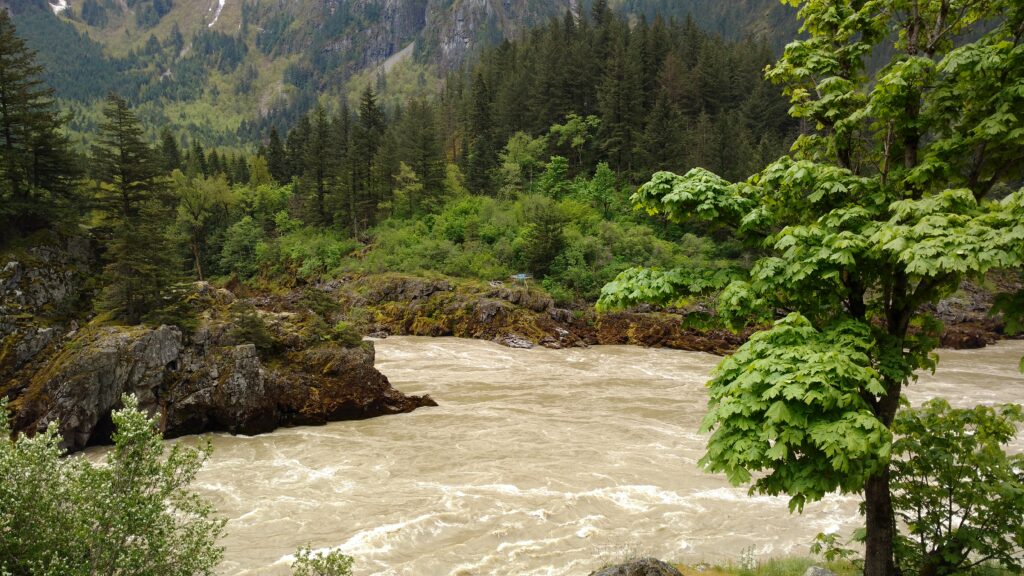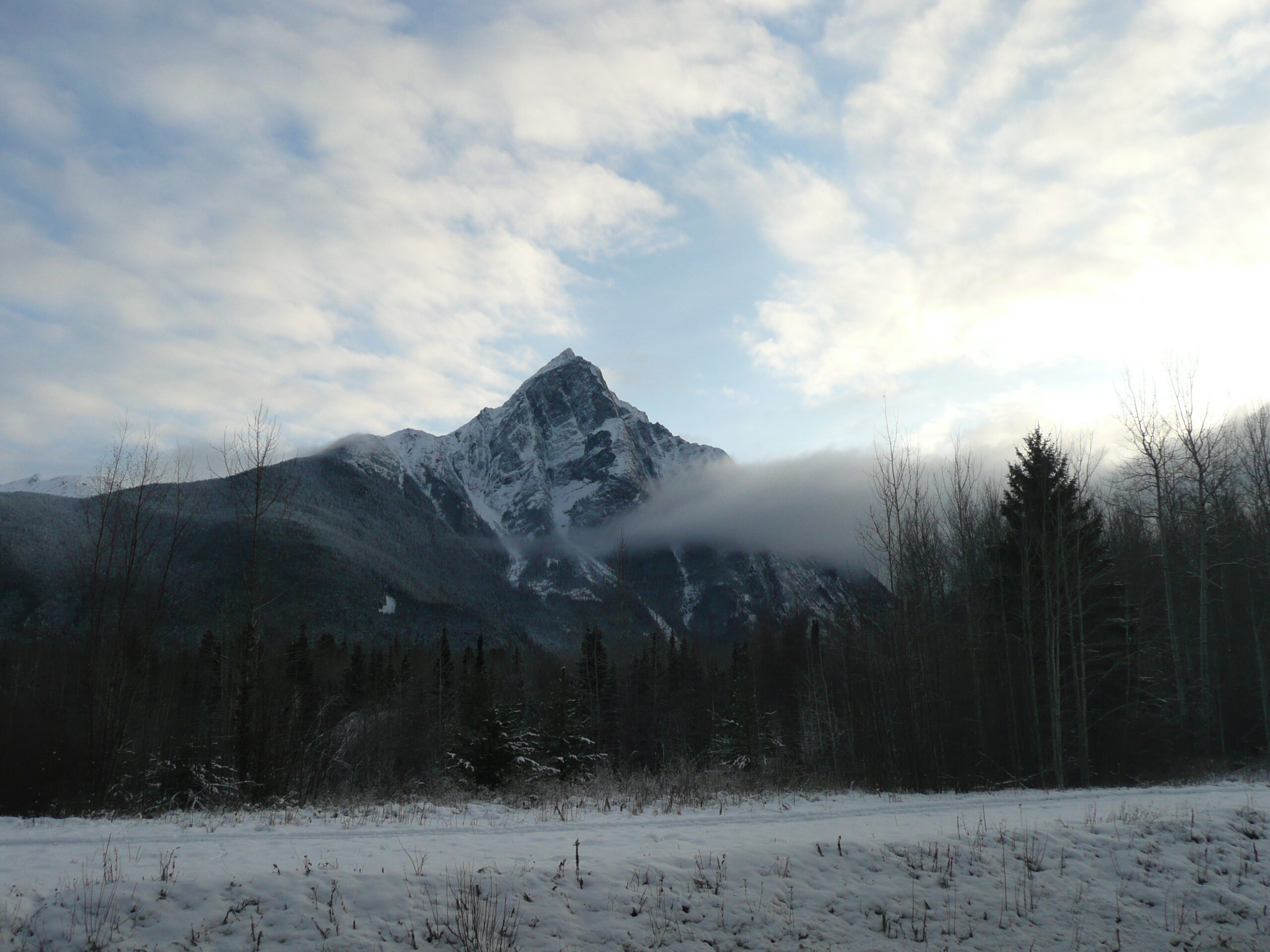First Nations seeking to protect their asserted (but yet unproven) Aboriginal title and rights, have now been given the go-ahead by the British Columbia Court of Appeal (“BCCA”) to bring claims against third parties in nuisance and for interference with riparian rights, just as any other Canadian landowner can.

Photo credit: Gordon Lyall
In Saik’uz First Nation and Stellat’en First Nation v. Rio Tinto Alcan Inc., 2015 BCCA 154, Justice Tysoe ruled that claims for nuisance and breach of riparian rights brought by the Saik’uz and Stellat’en First Nations (“Nechako Nations” or “Nations”) against Rio Tinto Alcan Inc. (“Alcan”) resulting from its operation of the Kenney Dam, which the Nations allege has harmed the Nechako River system and their fisheries, can proceed. The Court of Appeal in this unanimous decision ruled that the BC Supreme Court was wrong to have decided that the Nations could only bring their claims once their Aboriginal title and rights were proven in Court or acknowledged by the Crown. First Nations have existing legal rights that must be respected and protected now. The Court rejected Alcan’s arguments that the claim should have been thrown out before the Nations even had their day in court.
BACKGROUND
In September 2011, the Nechako Nations filed an action in BC Supreme Court claiming that Alcan’s operation of the Kenney Dam harmed the Nechako river and their fisheries (through diverting water, changing water flows and temperature, eroding the banks, and generally interfering with the ecological system), and that these actions constituted private nuisance, public nuisance, and a breach of their riparian rights. The Nations sought injunctions to restrain Alcan, as well as damages. The Nations claimed proprietary interests in the waters and resources of the Nechako River. They grounded their claim in their Aboriginal title and rights, asserting that the lands in the vicinity of the Nechako River, as well as the river and the river-bed are subject to their Aboriginal title and rights. The Nations have reserves on the bank of the Nechako River and, on this basis, also grounded the claims in their reserve rights.
The claim sets out that as a result of Alcan’s operations, the Nations suffered adverse impacts, including interference with their ability to use fisheries resources, loss of use, enjoyment and value of the fisheries and lands subject to their Aboriginal title, and negative cultural impacts.
The first step Alcan took was to bring an application to have the claim dismissed, and/or to strike out the claim on the basis that it didn’t disclose a reasonable cause of action (i.e., no chance of success). The essence of Alcan’s argument was that the Nations’ Aboriginal title and rights were merely asserted and not proven and therefore too tenuous on which to base their claim. Justice Cohen of the BC Supreme Court agreed with Alcan.
The Nations appealed, and won. First Nations can pursue injunctions and lawsuits for damages, and can rely on their Aboriginal title and rights to do so.

Photo credit: Gordon Lyall
BC COURT OF APPEAL DECISION
The central issue in the appeal was whether First Nations’ Aboriginal title and rights have to first be “recognized” before they can advance a tort claim grounded in their title and rights. Justice Tysoe, writing for the BCCA held that Aboriginal title and rights already exist, and don’t depend on additional recognition for their enforcement.
The BCCA found that the BC Supreme Court had incorrectly created a “unique pre-requisite to the enforcement of Aboriginal title and other Aboriginal rights” whereby these rights could only be relied on or enforced if they had first been proven in court or recognized by the Crown. Imposing such a pre-requisite would be inconsistent with s. 35 of the Constitution Act, which recognizes and affirms “existing” Aboriginal title and rights. In other words, the law is clear that Aboriginal title and rights exist prior to declaration or recognition. All that a court declaration or Crown acceptance does is identify the exact nature and extent of the rights.
Justice Tysoe reasoned that there was no principled reason to require the Nechako Nations to first obtain a court declaration in an action against the Province regarding the existence of their rights, before starting an action against a third party, such as Alcan. Lessees of land don’t have to first prove the validity of their leases before they are permitted to sue in nuisance, so why should First Nations face an extra hurdle? The answer is they shouldn’t.
With regard to the Nechako Nations’ claims based on their reserve interests, the BCCA found that riparian rights were not included when reserve lands were conveyed by the Province to the federal Crown, which for the most part occurred in 1938 through Order in Council 1036. The BCCA ruled that through the Water Act the Province had previously vested water rights to itself, and therefore did not convey any water rights to the federal Crown. For this reason, and because the Nations had not pleaded all the necessary facts regarding the riparian rights connected with their reserve lands, the Court concluded the Nations could not sustain this aspect of their claim.
The Nations could, however, pursue their nuisance claims based on their exclusive possession of their reserve lands, as this interest had previously been found sufficient to ground claims in other torts, such as trespass.
Alcan pursued a cross-appeal, arguing that the BC Supreme Court was wrong not to have accepted its argument based on a defence of statutory authority. This defence bars nuisance claims if a certain activity is authorized under federal or provincial legislation, and the nuisance is the “inevitable result” of doing the authorized activity. The BCCA held that there was an open question as to whether the impacts of the Kenney Dam complained of by the Nations were the “inevitable result” of the diversion of water authorized by Alcan’s licence and associated instruments. The statutory authority did not prescribe how the Kenney Dam was to be constructed and it’s not known if it could have been constructed in a way to have avoided the nuisance. These will be matters for trial.
NEXT STEPS
The BCCA in this decision did not decide that the Nechako Nations have proven their claims, only that their claims against Alcan can proceed. In other words, Justice Tysoe decided it is not plain and obvious that the Nations’ notice of civil claim discloses no reasonable cause of action.
The Nechako Nations will now proceed to advance their claims in BC Supreme Court. To succeed in a private nuisance claim, the Nations will need to prove that there has been interference with their use or enjoyment of land (i.e., their Aboriginal title) that is both substantial and unreasonable. To succeed in the public nuisance claim, the Nations will need to show that Alcan’s operation of the Kenney Dam unreasonably interferes with the public’s interest in such things as health, safety, morality, comfort or convenience, and that it resulted in special damages, unique to them.
If successful in showing how Alcan’s operations have adversely affected their title and rights, the Nations are asking the Court to order Alcan to stop or change its operations, and/or for damages for the harms they have suffered.
This case is a concrete application of the Supreme Court of Canada’s historic ruling in Tsilhqot’in. Aboriginal title gives First Nations the right to use and control the land and to enjoy its benefits, just as other landowners can, and First Nations do not have to first prove their Aboriginal title and rights before they can get through the courthouse door to protect and enforce those rights. Aboriginal title and rights are not claims ─ they exist. The claims First Nations have are against those who have used and exploited their lands without consent.
Update: On October 15, 2015, the Supreme Court of Canada dismissed Rio Tinto’s application for leave to appeal.
This case summary provides our general comments on the case discussed and should not be relied on as legal advice. If you have any questions about this case or any similar issue, please contact any of our lawyers.
See CanLII for the Reasons for Judgement.